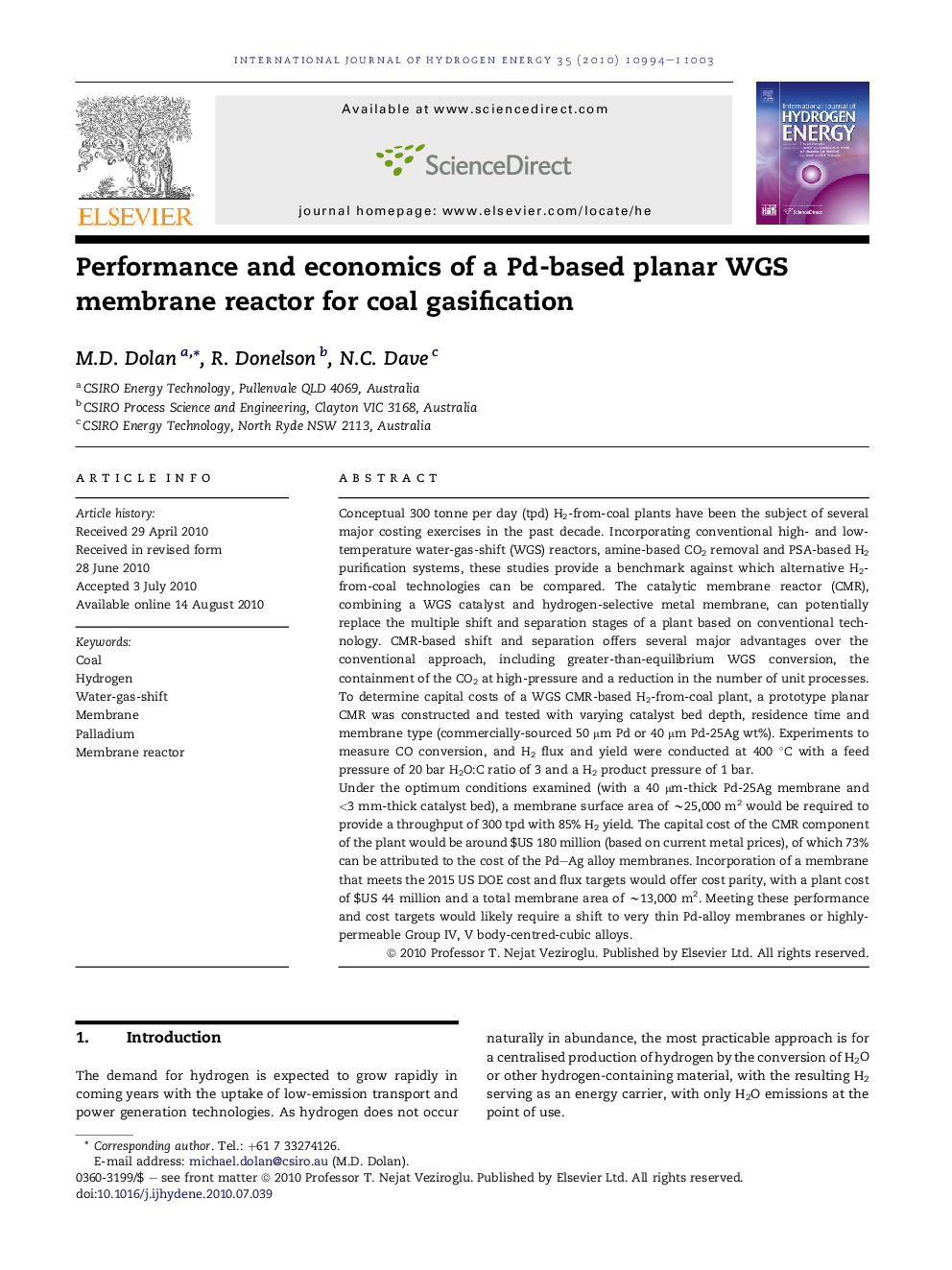| کد مقاله | کد نشریه | سال انتشار | مقاله انگلیسی | نسخه تمام متن |
|---|---|---|---|---|
| 1276695 | 1497597 | 2010 | 10 صفحه PDF | دانلود رایگان |

Conceptual 300 tonne per day (tpd) H2-from-coal plants have been the subject of several major costing exercises in the past decade. Incorporating conventional high- and low-temperature water-gas-shift (WGS) reactors, amine-based CO2 removal and PSA-based H2 purification systems, these studies provide a benchmark against which alternative H2-from-coal technologies can be compared. The catalytic membrane reactor (CMR), combining a WGS catalyst and hydrogen-selective metal membrane, can potentially replace the multiple shift and separation stages of a plant based on conventional technology. CMR-based shift and separation offers several major advantages over the conventional approach, including greater-than-equilibrium WGS conversion, the containment of the CO2 at high-pressure and a reduction in the number of unit processes.To determine capital costs of a WGS CMR-based H2-from-coal plant, a prototype planar CMR was constructed and tested with varying catalyst bed depth, residence time and membrane type (commercially-sourced 50 μm Pd or 40 μm Pd-25Ag wt%). Experiments to measure CO conversion, and H2 flux and yield were conducted at 400 °C with a feed pressure of 20 bar H2O:C ratio of 3 and a H2 product pressure of 1 bar.Under the optimum conditions examined (with a 40 μm-thick Pd-25Ag membrane and <3 mm-thick catalyst bed), a membrane surface area of ∼25,000 m2 would be required to provide a throughput of 300 tpd with 85% H2 yield. The capital cost of the CMR component of the plant would be around $US 180 million (based on current metal prices), of which 73% can be attributed to the cost of the Pd–Ag alloy membranes. Incorporation of a membrane that meets the 2015 US DOE cost and flux targets would offer cost parity, with a plant cost of $US 44 million and a total membrane area of ∼13,000 m2. Meeting these performance and cost targets would likely require a shift to very thin Pd-alloy membranes or highly-permeable Group IV, V body-centred-cubic alloys.
Journal: International Journal of Hydrogen Energy - Volume 35, Issue 20, October 2010, Pages 10994–11003